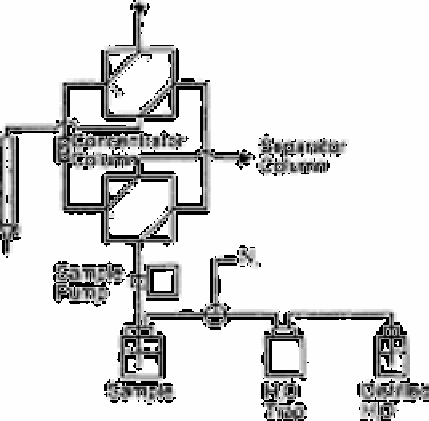Chemistry Reference
In-Depth Information
Standard solutions of 1000mg L
−1
. Prepare for individual species (chloride, phosphate,
nitrate and sulphate) from reagent grade chemicals and triply distilled water. Then dilute
solutions to 10 or 1mg L
−1
before further dilutions to 20 or 2µg L
−1
Apparatus
Model 14 Ion Chromatograph (Dionex Corporation, Sunnyvale,
Fig. 12.31
Sample loading and injection flow system
Source: Reproduced with permission from the American Chemical
Society [58]
California, 94086). Linear Instruments strip chart recorder was used to monitor the
analyses. Instrumental conditions were: eluent, 0.003mol L
−1
, NaHCO
3
/0.0024mol L
−1
,
Na
2
CO
3
; flow rate, separator column, 3×500mm anion
separator; suppressor column, 3× 250mm anion suppressor; conductivity meter setting;
variable; sample volume, variable; recorder speed, 0.5cm/min
−1
.
Pump loading of concentrator columns
To eliminate any possibility of sample contamination, samples to be loaded by pump
were placed in a Wheaton flask under a purified nitrogen atmosphere. As supplied, the
ion chromatograph has two analytical systems, including two eluent pumps. One of the
eluent pumps was used to load the concentrator columns while the other was used to load
the chromatographic separation. The concentrators were loaded at a rate of 7ml min
−1
as
determined by measuring the effluent from the concentrator wasteline. The sample
loading and injection flow system is shown in Fig. 12.31. The two valves constitute one
injection valve (upper and lower halves). Solid lines indicate liquid flow connections;
dotted lines indicate alternate flow paths used when the valve is in the load position.


Search WWH ::

Custom Search